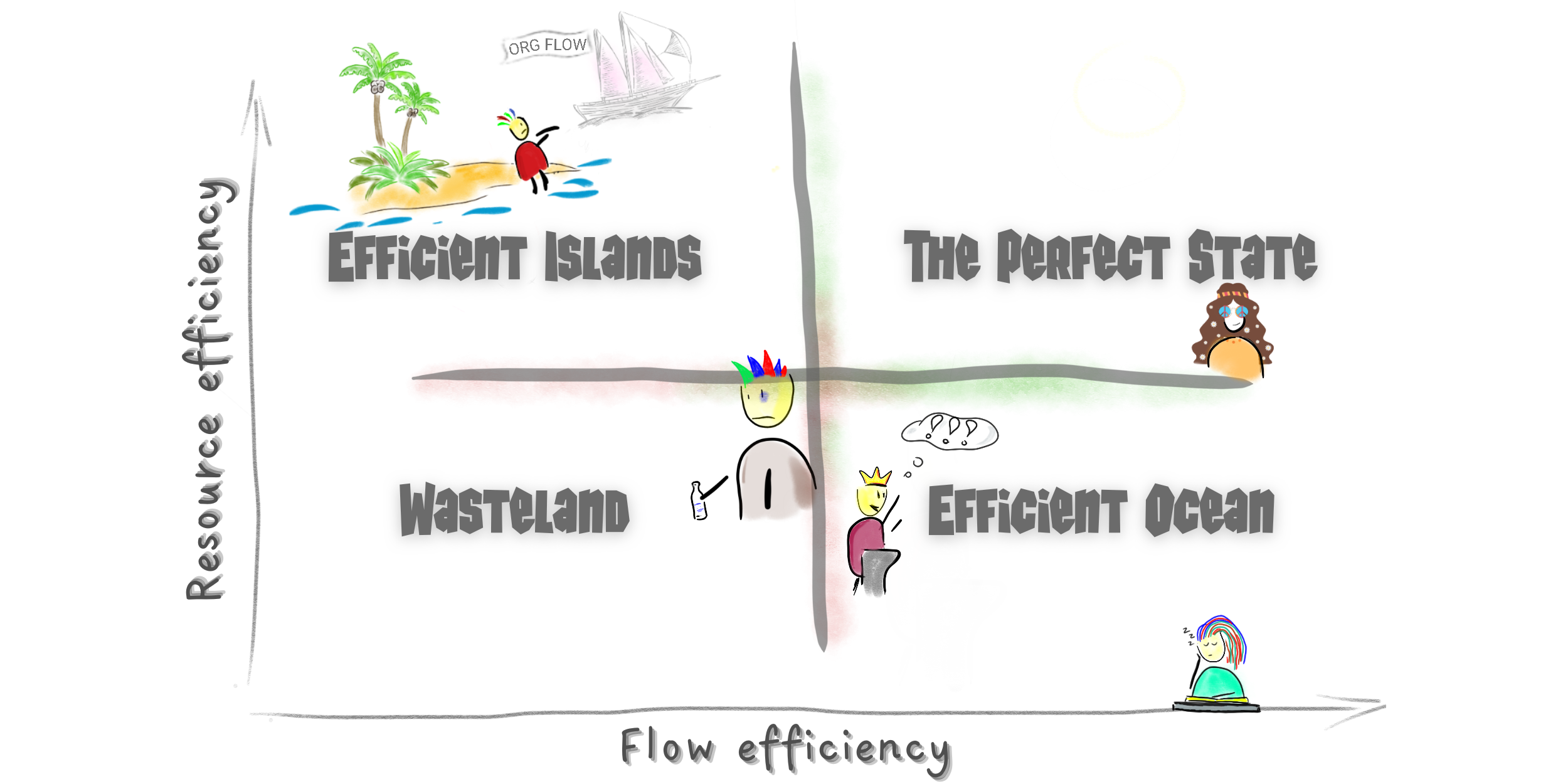I want to take you back to Lean basics. The Efficiency Matrix presented by Niklas Modig in “This is Lean” book. Just remember, when working on your everyday improvements, it can change the whole game…
In what part of the quadrant is your company?
🐝EFFICIENT ISLANDS
In this state, personal or diverse team efficiency is high – we work a lot and well. But inter-team and organizational flow efficiency is low. That means that “work items” wait “between” teams or individuals without bringing the desired outcome for the organization. We have tons of inventory… I already explored a real-life example of the #EfficientIsland effect in the post, which you can find using this hashtag.
🏖️PERFECT STATE
Obviously, here we have both high resource efficiency and high flow efficiency. The difficulty of achieving that hides in flow variations on one hand and on the other hand – in not being able to fight the efficiency paradox: we believe that we are utilizing our resources efficiently, but we are actually being inefficient, since much of that utilization comes from superfluous work and non-value-adding activities.
🗑️WASTELAND
In the lower left-hand corner of the matrix, the organization is unable to use its resources efficiently or create an efficient flow. I don’t think we have to dive deeper here, it’s just a bit of nonsense 😃
🌊THE EFFICIENT OCEAN
That’s vice versa: flow efficiency is high, but resource efficiency is low. The focus is on the customers and meeting their needs as efficiently as possible. That means that we focus on holding free capacity in the organization’s resources – we can always react if there is a need. Resources are only used when there is an actual need to satisfy, so there is a lot of just waiting.
